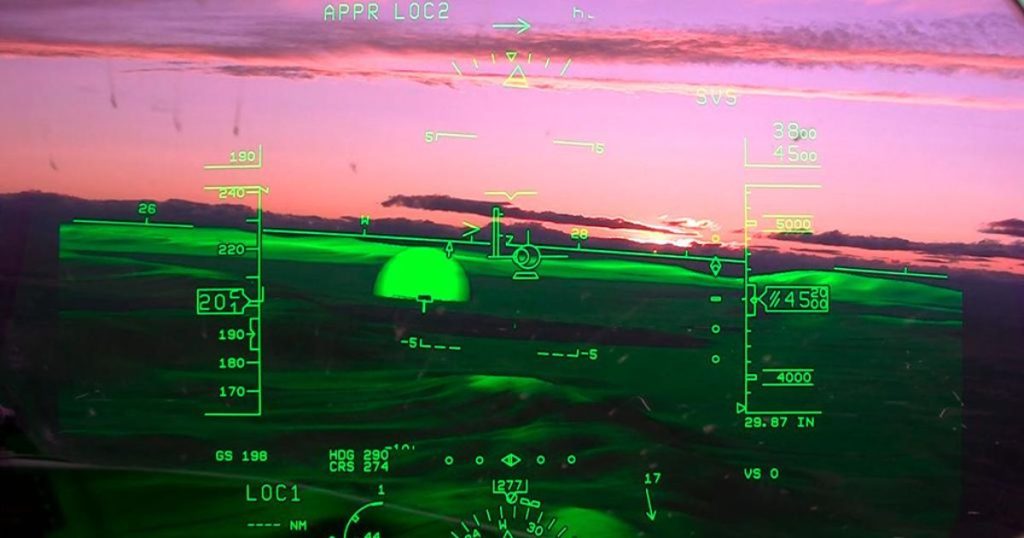The growth of augmented reality (AR) applications in recent years show a significant increase in demand and investment in AR. Therefore, it is essential to take a look at the history of augmented reality to deeply understand this popular technology and fully take advantage of it.
This article will show you the brief history of Augmented Reality and some predictions about the future.
The Brief History of Augmented Reality
1957: Morton Heilig, a cinematographer, was the first to achieve some extent of augmented reality. He created the Sensorama, which provided the viewer with visuals, sounds, vibration, and smell. Though it wasn’t computer-controlled, it was the first attempt at adding data to an experience.
1968: Ivan Sutherland, an American computer scientist, developed the ‘Sword of Damocles’ at the University of Salt Lake City in the United States. The device was a head-mounted three-dimensional display that doubled as a pair of 3D glasses.

1975: Myron Krueger, an American computer artist, created the first “virtual reality” interface, “Videoplace,” which allowed users to manipulate and interact with virtual objects in real time.
1980: Steve Mann, a computational photography researcher, invented wearable computing.
1990: Thomas P Caudell of Boeing coined the phrase “augmented reality” in 1990.
1992: At the US Air Force Research Laboratory, Louis Rosenburg developed the augmented reality tool ‘Virtual Fixtures,’ which serves as virtual flying training for Air Force pilots. The system enabled military personnel to virtually control and guide machinery to perform tasks such as training US Air Force pilots on safer flying techniques.
1994: Julie Martin, a writer and producer, was the first to incorporate augmented reality into a theatrical production. The show ‘Dancing in Cyberspace’ featured acrobats dancing alongside projected virtual objects on the stage.
1999: NASA’s X-38 spacecraft featured an AR system that displayed map data directly on the pilot’s screen to help with navigation during test flights.

2000: The first AR game, ‘AR Quake,’ was released, with players wearing a head-mounted display and a backpack containing a computer and gyroscope.
2005: AR Tennis was the first phone AR app that two people could play on a Nokia Phone.
2008: BMW was the first automaker to use AR technologies in a magazine advertisement to promote the BMW mini as a virtual 3D model. The model appeared on the screen when this print ad was held in front of a computer’s camera. The user could move around the virtual car on the screen by interacting with the paper and moving it thanks to digital markers on the physical ad.
2009: For the first time, Esquire Magazine used augmented reality in print media to bring the pages to life. This year, ARToolKit, an open-source software library founded in 2000, also brought AR to browsers and paved the way for webAR.
2013: Volkswagen debuted the MARTA app, which provided step-by-step repair instructions within the AR service manual, demonstrating that AR training could be used in various industries.
2014: Google announced its open beta of Google Glass. The wearable AR technology operated via the internet and voice control, allowing users to access Google apps such as Google Maps, Gmail, and others.
2015: Snapchat introduced AR Filters in 2016, quickly followed by other social networks such as Facebook and Instagram in 2017.
2016: Microsoft released its version of wearable AR technology, Microsoft HoloLens 2, which has more advanced features than Google Glass. It enabled users to scan their surroundings and create their own AR experiences.
2017: IKEA released an Augmented Reality app that allows customers to virtually preview their furniture options before purchasing and encourages other industries to follow suit.

2017 – 2018: Apple and Google released Augmented Reality development kits for their respective platforms, iOS and Android. The terms ARKit and ARCore SDK are still widely used in the industry.
The Current State of Augmented Reality
At this time, AR is currently used in many industrial sectors for different purposes: Archaeology, Art, Architecture, Commerce, Office, Construction, Industrial Design, Education, Translation, Emergency Management, Disaster Recovery, Medical and Search and Rescue, Games, Sports, Entertainment, Tourism and Military.

AR is achieved through a variety of technological innovations; these can be implemented either individually or in combination to create AR. They are as follows:
- General hardware components include the processor, the display, the sensors and input devices. A smartphone typically contains a processor, a display, accelerometers, GPS, a camera, a microphone, and other hardware required to function as an AR device.
- Displays such as optical projection systems, head-mounted displays, eyeglasses, contact lenses, the HUD (heads-up display), virtual retinal displays, EyeTap (a device that changes the rays of light captured from the environment and substitutes them with computer-generated ones), Spatial Augmented Reality (SAR – which uses ordinary projection techniques as a substitute for a display of an object).
- Sensors and input devices include GPS, gyroscopes, accelerometers, compasses, RFID, wireless sensors, touch recognition, speech recognition, eye tracking, and peripherals.
- Software: Most AR development will be in developing additional software to take advantage of the hardware capabilities. An Augmented Reality Markup Language (ARML) is already used to standardize virtual reality’s XML grammar. Several software development kits (SDK) are available that provide simple environments for AR development.
The Future of Augmented Reality
Augmented reality technology will increase as we become more reliant on our mobile devices. AR software advancements will be the way forward because most consumers own a smartphone and already carry it everywhere, making it a convenient medium to bring AR to nearly every consumer.
The truth is that everyday consumers are already using augmented reality; they aren’t aware of it. AR is still perceived as too ‘high tech’ for the average. The most significant change in augmented reality will have to be how it is delivered to change perception.

On the other hand, AR hardware is still behind the times. However, developing a practical augmented reality headset is a significant opportunity. Wearable technology is gradually becoming the norm, and as this trend continues, people may be more open to AR hardware. Therefore, the adoption of AR technology must begin with software applications that meet consumers where they are now.
FAQs
What was the first augmented reality?
The first AR technology, named ‘Sword of Damocles’ was created in 1968 at the University of Salt Lake City in the United States. The device was a head-mounted three-dimensional display that functioned as a pair of 3D glasses.
Who invented AR and VR?
Ivan Sutherland was the first inventor of the AR device named “Sword of Damocles”. However, the term was not used until 1990 when Tom Caudell, a Boeing researcher, coined the term “augmented reality”.
Similarly, today’s VR technologies build upon ideas that date back to the 1800s. But until 1989, the term “virtual reality” was coined by Jaron Lanier, founder of VPL Research. At that time, he began developing the equipment required to experience “virtual reality,” such as goggles and gloves.
You may also be interested in: augmented reality vs virtual reality
Who is known for founding augmented reality?
With the assistance of his student Bob Sproull, Ivan Edward Sutherland at the University of Utah developed the first Virtual Reality (VR) and Augmented Reality (AR) head-mounted display system.
He is a computer scientist and Internet pioneer who is widely regarded as a computer graphics pioneer. His early work in computer graphics and his teaching in that subject with David C. Evans at the University of Utah in the 1970s was groundbreaking in the field.
When was augmented reality launched?
The term ‘augmented reality’ was coined in 1990 by Boeing researcher Tim Caudell. After that, the first AR tool, ‘Virtual Fixtures’ was created by Louis Rosenburg at the US Air Force Research Laboratory, which serves as virtual flying training for Air Force pilots.
Conclusion
In conclusion, by understanding the roots and trajectories of AR, we can better appreciate the opportunities and challenges of this emerging field, and perhaps even contribute to its continued growth and development. If you still have concerns about any further information, please contact us!

Related Posts: